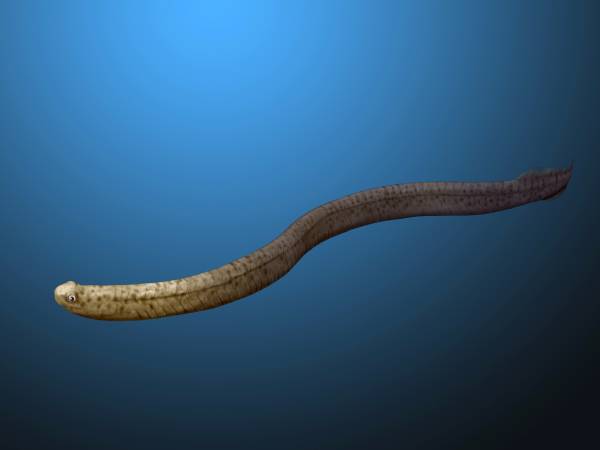|
Paracordylodontidae
Paracordylodontidae is an extinct family of conodonts in the clade Prioniodontida, also known as the "complex conodonts". Genera Genera are: * â '' Cooperignathus'' * â '' Fahraeusodus'' * â '' Oelandodus'' * â ''Paracordylodus'' * â ''Protoprioniodus ''Protoprioniodus'' is an extinct genus of conodonts. Use in stratigraphy The Whiterock Stage refers mainly to the early Middle Ordovician in North America. It is often used in the older literature in a global sense. The Whiterock Stage is g ...'' References External links Prioniodontida Conodont families {{conodont-stub ... [...More Info...] [...Related Items...] OR: [Wikipedia] [Google] [Baidu] |
Stig Bergström
Stig M. Bergström (born 12 June 1935 in Skövde) is a Swedish-American paleontologist. In 1981, he described the conodont family Paracordylodontidae. In 1974, he described the multielement conodont genus '' Appalachignathus'' from the Middle Ordovician of North America. Awards and tributes He received the Pander Medal by the Pander Society. In 1999, he received the Raymond C. Moore Medal, awarded by the Society for Sedimentary Geology to persons who have made significant contributions in the field which have promoted the science of stratigraphy by research in paleontology and evolution and the use of fossils for interpretations of paleoecology. In 2011, he received the Paleontological Society Medal. The rhipidognathid conodont genus '' Bergstroemognathus'' Spergali 1974 has been named in his honour.Ordovician Rhipidognathid Conodonts from Australia and Iran. Yong Y. Zhen, Robert S. Nicoll, Ian G. Percival, Mir Alireza Hamedi and Ian Stewart, Journal of Paleontology, Vol. 75, ... [...More Info...] [...Related Items...] OR: [Wikipedia] [Google] [Baidu] |
Protoprioniodus
''Protoprioniodus'' is an extinct genus of conodonts. Use in stratigraphy The Whiterock Stage refers mainly to the early Middle Ordovician in North America. It is often used in the older literature in a global sense. The Whiterock Stage is given a range from 471.8 (ca. 472) to 462 m.y.a., spanning close to 10 million years. Officially its start is defined by the potentially lowest occurrence of the conodonts ''Protoprioniodus aranda'' or ''Baltoniodus triangularis ''Baltoniodus'' is an extinct genus of conodonts. Use in stratigraphy The base of the Dapingian, the third stage of the Middle Ordovician, is defined as the first appearance of ''Baltoniodus triangularis''. The Whiterock Stage refers mainly ...''. References External links * * Prioniodontida genera Ordovician conodonts {{conodont-stub ... [...More Info...] [...Related Items...] OR: [Wikipedia] [Google] [Baidu] |
Conodont
Conodonts ( Greek ''kÅnos'', " cone", + ''odont'', " tooth") are an extinct group of agnathan (jawless) vertebrates resembling eels, classified in the class Conodonta. For many years, they were known only from their tooth-like oral elements, which are usually found in isolation and are now called conodont elements. Knowledge about soft tissues remains limited. They existed in the world's oceans for over 300 million years, from the Cambrian to the beginning of the Jurassic. Conodont elements are widely used as index fossils, fossils used to define and identify geological periods. The animals are also called Conodontophora (conodont bearers) to avoid ambiguity. Discovery and understanding of conodonts The teeth-like fossils of the conodont were first discovered by Heinz Christian Pander and the results published in Saint Petersburg, Russia, in 1856. The name ''pander'' is commonly used in scientific names of conodonts. It was only in the early 1980s that the first fossil evi ... [...More Info...] [...Related Items...] OR: [Wikipedia] [Google] [Baidu] |
Treatise On Invertebrate Paleontology
The ''Treatise on Invertebrate Paleontology'' (or ''TIP'') published by the Geological Society of America and the University of Kansas Press, is a definitive multi-authored work of some 50 volumes, written by more than 300 paleontologists, and covering every phylum, class, order, family, and genus of fossil and extant (still living) invertebrate animals. The prehistoric invertebrates are described as to their taxonomy, morphology, paleoecology, stratigraphic and paleogeographic range. However, taxa with no fossil record whatsoever have just a very brief listing. Publication of the decades-long ''Treatise on Invertebrate Paleontology'' is a work-in-progress; and therefore it is not yet complete: For example, there is no volume yet published regarding the post-Paleozoic era caenogastropods (a molluscan group including the whelk and periwinkle). Furthermore, every so often, previously published volumes of the ''Treatise'' are revised. Evolution of the project Raymond C. Moor ... [...More Info...] [...Related Items...] OR: [Wikipedia] [Google] [Baidu] |
Paracordylodus
''Paracordylodus'' is an extinct genus of conodonts in the clade Prioniodontida, also known as the "complex conodonts". The species ''P. gracilis'' has been recovered from the chert of the Narooma Terrane, a geological structural region on the south coast of New South Wales, Australia. References External links * ''Paracordylodus''at fossilworks Fossilworks is a portal which provides query, download, and analysis tools to facilitate access to the Paleobiology Database, a large relational database assembled by hundreds of paleontologists from around the world. History Fossilworks was cre ....org (retrieved 11 May 2016) Prioniodontida genera Ordovician conodonts Early Ordovician animals Fossil taxa described in 1971 {{conodont-stub ... [...More Info...] [...Related Items...] OR: [Wikipedia] [Google] [Baidu] |
Prioniodontida Prioniodontida, also known as the "complex conodonts", is a large clade of conodonts that includes two major evolutionary grades; the Prioniodinina and the Ozarkodinina. It includes many of the more famous conodonts, such as the giant ordovician ''Promissum'' (Prioniodinina) from the Soom Shale and the Carboniferous specimens from the Granton Shrimp bed (Ozarkodinina). They are euconodont Conodonts (Greek ''kÅnos'', "cone", + ''odont'', "tooth") are an extinct group of agnathan (jawless) vertebrates resembling eels, classified in the class Conodonta. For many years, they were known only from their tooth-like oral elements, which ...s, in that their elements are composed of two layers; the crown and the basal body, and are assumed to be a clade. Phylogeny This is a recent cladogram of the Prioniodontida, simplified from Donoghue ''et al.'', (2008). Notes References {{Taxonbar, from=Q6581502 Vertebrate unranked clades ... [...More Info...] [...Related Items...] OR: [Wikipedia] [Google] [Baidu] |
